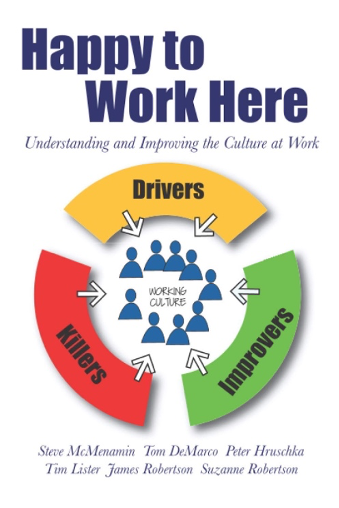 Together with my colleagues from the Atlantic Systems Guild, we have compiled many dozens of behavioral patterns - positive and negative, each of which we have given a characteristic name in our book “Adrenaline Junkies and Template Zombies – Understanding Patterns of Project Behavior”.
Together with my colleagues from the Atlantic Systems Guild, we have compiled many dozens of behavioral patterns - positive and negative, each of which we have given a characteristic name in our book “Adrenaline Junkies and Template Zombies – Understanding Patterns of Project Behavior”.
Adrenaline junkies, for example, are people who can only work when the seat of their pants is on fire and who proclaim a new top priority every 5 minutes. Surely you like such colleagues!
If you do project work, you need to know about:
- Project Sluts - managers who can’t say no
- Children of Lake Wobegon - is everyone really above average?
- Soviet Style - building the product no one can love
- Hidden Beauty - an ethic that drives great developers
- News Improvement - how status gets rosier as it travels higher in the organization
- Marilyn Munster - she’s on your project and you need her
- Dead Fish - learning to appreciate project odor
- Sanctity of the Half-baked Idea - the creative team’s best friend
- Seelenverwandtschaft (you’ll just have to read the book) and 77 more
“Brilliantly insightful. One moment you think, ‘Darn it, I’m doing this …. we’re toast,’ followed by the certainty: ‘I’m not the only one. There’s hope!”
Howard Look · Vice President, Software, Pixar Animation Studios
„Another masterpiece from the folks who brought you Peopleware. Anyone who has survived a software project or two will surely recognize many of these patterns and will be able to learn from most of them. Adrenaline Junkies and Template Zombies is a real joy.“
Joel Spolsky · Author of „Joel on Software“

How does such positive and negative behavior occur? The answer can be found in your company culture.
We drilled deeper: What actually determines a positive or negative corporate culture?
Corporate culture is probably the least scrutinized aspect of your work environment, but it is by no means inscrutable. In our book “Happy to work here - understanding and improving the Culture at Work”, we show you how improving your culture can lead to a happier working environment.
The book enables you
- to understand the existing corporate culture,
- uncover structures and understand the resulting behaviors,
- to decipher unspoken rules that have a poisoning effect on the working atmosphere,
- to change an unhealthy working climate in such a way that you and your environment feel comfortable.
We have distilled our observations and experiences from hundreds of organizations, identifying the influencing factors that make a good or bad corporate culture. We show you how to effectively influence these factors so you and your colleagues can say: »Happy to work here.«
Browse these two books – and feel free to send me (spam-protected) your own war-stories.